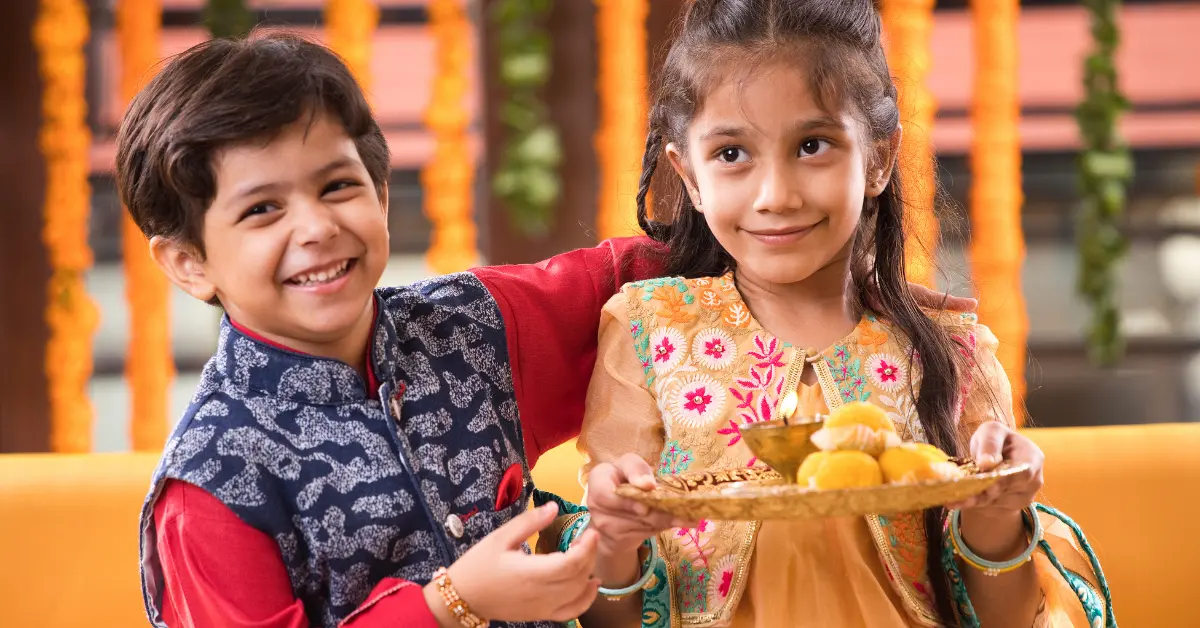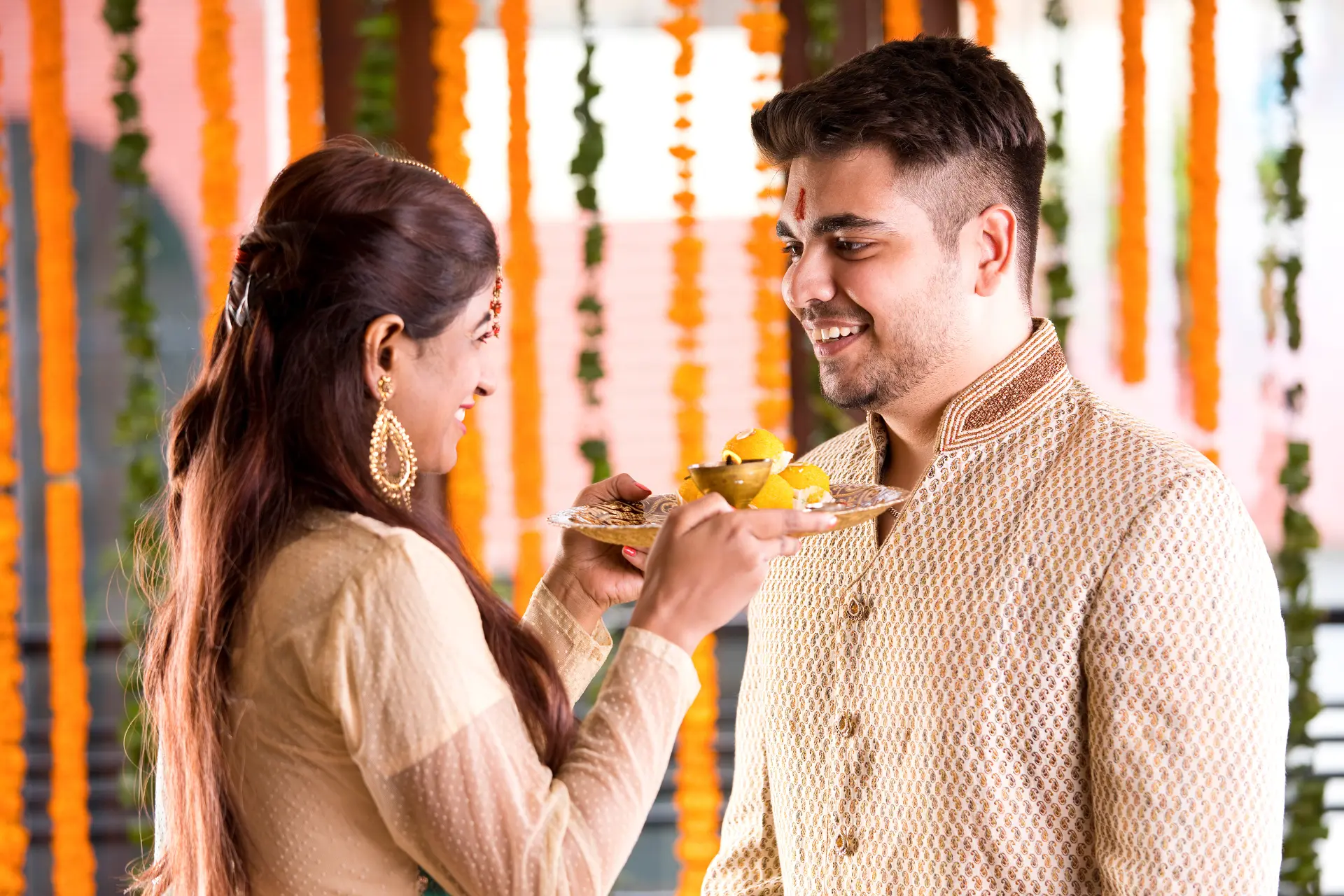Every year, as Raksha Bandhan approaches, my home fills with the familiar scent of ghee, cardamom, and sugar syrup. The festival is a warm celebration of sibling love, but it is also, quite literally, a sugar rush in the making.
As an expert in nutrition and wellness, and someone who grew up celebrating this tradition, I’ve experienced both the joy of unlimited laddoos and the regret of overindulgence.
This festival is not just about tying a rakhi and exchanging gifts; sweets are at the heart of the celebration. They symbolize love and abundance, but their irresistible nature also brings a quiet question: how much is too much? The answer isn’t as simple as “a little” or “a lot,” it’s about understanding our bodies, our traditions, and how to keep both in harmony.
Why Sweets Are Central to Raksha Bandhan
The tradition of sharing sweets during Raksha Bandhan has deep cultural roots. In Indian customs, sweets signify good fortune and mark the beginning of auspicious events.
Offering them is a gesture of goodwill, blessing, and joy. The act is as important as the sweet itself, the giver and receiver exchange affection through something tangible and delicious.
Growing up, my siblings and I had our favorites, my sister loved kaju katli, while I gravitated toward gulab jamun. These weren’t just treats; they were symbols of our bond. Every bite carried the warmth of childhood memories, from mischievous fights to heartfelt moments.
The trouble begins when nostalgia and celebration override our sense of balance. We’re not just eating sweets; we’re reliving decades of memories, which makes “just one more” hard to resist. This is why understanding the role of sweets, both emotionally and culturally, is the first step in managing their impact.
What is “Too Much” in Sweet Consumption?
The phrase “too much” depends on both the quantity and frequency of sugar intake. From a health perspective, the World Health Organization recommends keeping added sugar under 10% of daily calories, and ideally below 5%. For most adults, that’s about 25 grams of sugar a day, roughly the amount in a single large gulab jamun.
During festivals, it’s easy to surpass that limit in one sitting. The problem isn’t a single sweet; it’s the chain reaction. One bite triggers another, and before you know it, you’ve had four or five, all before lunch. That sudden spike in sugar can stress the body, especially for those with insulin resistance or diabetes.
Emotionally, we justify excess because “it’s only once a year.” While occasional indulgence is fine, when festivals pile up, such as Raksha Bandhan, Diwali, and weddings, the cumulative effect can harm our health. Understanding this difference helps us separate true celebration from mindless overindulgence.
Festival Sugar Spikes: What They Do to Your Body
When you consume a large amount of sugar in a short time, your blood glucose levels shoot up. This gives a temporary burst of energy, the sugar high, followed by a rapid drop that leaves you feeling sluggish, irritable, or even craving more sweets. It’s like pushing your body on a rollercoaster it didn’t ask to ride.
Your pancreas releases insulin to bring down blood sugar levels, but repeated spikes can lead to insulin resistance over time. This is the path toward prediabetes and type 2 diabetes, conditions that are unfortunately rising in India.
Even if you’re healthy, sudden sugar overload can cause inflammation, affect your gut microbiome, and disrupt your natural energy rhythms.
Many people notice post-festival fatigue, that heavy, tired feeling that lingers for days. It’s not just the late nights or overeating overall; sugar plays a big role. When we understand these short- and long-term effects, moderation stops feeling like a sacrifice and starts feeling like self-care.
Smart Sweet Choices Without Killing the Joy
One of the myths I often hear is that “healthy” means “boring.” Not true, especially during Raksha Bandhan. You can absolutely enjoy the festival’s flavors while making smarter choices. For example, opt for sweets made with jaggery, dates, or honey instead of refined sugar. These still have natural sugars, but they come with minerals, fiber, and a gentler effect on blood sugar.
Portion control is another overlooked strategy. Instead of taking a whole bowl of rasmalai, share it with a sibling. This keeps the taste and joy intact while cutting the sugar load. Pairing sweets with protein or fiber, like nuts or milk, can also slow sugar absorption and keep energy levels steady.
Homemade sweets are my favorite solution. You can adjust sweetness levels, use healthier fats, and avoid preservatives. A batch of homemade besan laddoos with moderate sugar can be just as satisfying, and far better for your body than store-bought versions.
The Social Challenge of Saying “No”
In our culture, refusing a sweet can sometimes be taken as rejecting the love behind it. That’s a lot of emotional weight for one laddoo. I’ve been in situations where I’ve had to politely accept a sweet I didn’t plan on eating, just to avoid hurting someone’s feelings.
The trick is to approach it with tact. You can say you’ve already had some earlier, or simply take a small piece instead of the whole. Sometimes, I keep my portion on the plate while continuing the conversation, which shifts the focus away from eating to sharing the moment.
We can also start shifting traditions gently. Families can introduce more variety, fruit platters, savory snacks, or lighter sweets, so sugar isn’t the only symbol of affection. This way, everyone gets to express and receive love without compromising health.
Final Thought
Raksha Bandhan is a celebration of bonds that outlast the years, of moments woven with laughter, mischief, and sweetness, literal and emotional. The challenge isn’t to give up sweets, but to ensure they remain a part of the joy, not the cause of regret.
When we strike the right balance, we protect both the meaning of the tradition and the well-being of the people we love. Moderation is not a dampener; it’s what allows us to keep celebrating with the same energy year after year.
This year, I’ll still enjoy my favorite gulab jamun, but I’ll savor it slowly, knowing that true sweetness comes from the moment, not the sugar.
FAQs
Offer smaller portions, mix them with healthy snacks, and space them out through the day. Children enjoy the excitement as much as the taste, so focus on the experience rather than unlimited quantities. Not always. Many use artificial sweeteners that can affect digestion or trigger cravings. If you choose sugar-free, opt for those made with natural sweeteners like stevia or monk fruit, and still eat in moderation. For most healthy people, a single binge won’t cause long-term harm. However, it can lead to temporary fatigue, digestive discomfort, or mood swings. For those with diabetes or metabolic issues, even one binge can be risky. Having sweets after a balanced meal is ideal, as the protein and fiber slow sugar absorption. Midday is better than late at night, when your body’s metabolism naturally slows down. How can children enjoy sweets without overdoing it?
Are sugar-free sweets really a healthier option?
Can one festival binge really affect my health?
What’s the best time of day to enjoy sweets for minimal impact?





